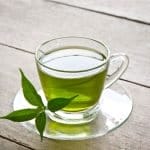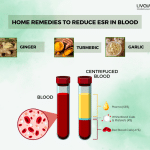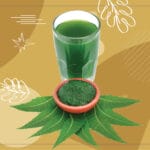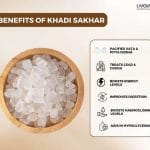Netra Tarpana is an essential Ayurvedic treatment focused on enhancing and maintaining eye health. This traditional therapy is rooted in ancient practices, where medicated ghee is used to nourish and rejuvenate the eyes. In today’s digital age, where prolonged exposure to screens is common, Netra Tarpana offers a natural solution to alleviate eye strain and improve vision. This therapy is significant not only for its immediate benefits but also for its holistic approach to ocular health.
What is Netra Tarpana?
Netra Tarpana, literally translating to “eye nourishment,” is a revitalizing treatment that involves gently bathing the eyes in medicated ghee (clarified butter). This medicated ghee is chosen specifically for your individual Doshic constitution. The warm ghee is poured around the eyes within a specially constructed dam made from urad dal (black gram) flour. As the ghee permeates the ocular tissues, it provides deep nourishment lubrication and promotes healing. [1, 2, 3]
Netra Tarpana Benefits
There are several Netra Tarpan benefits for eye health: [1, 2, 3]
- Soothes Dryness and Irritation: Medicated ghee, infused with herbs like Triphala and Manjistha, effectively hydrates and soothes dry, irritated eyes. This can bring relief from burning, itching, and discomfort, which is one of the primary Akshi Tarpana benefits.
- Strengthens Eye Muscles: Netra Tarpana nourishes the delicate muscles that control eye movement, potentially improving their function and enhancing vision clarity.
- Alleviates Eye Strain: Our modern lifestyles often expose us to excessive screen time and environmental irritants. Netra Tarpana promotes relaxation and reduces stress in the ocular muscles, effectively alleviating eye strain and associated symptoms like headaches and blurred vision.
- Supports Eye Disorders: Netra Tarpana or Akshi Tarpana can be a valuable complementary therapy for managing various eye conditions. While it is not a substitute for conventional medical treatment, it may help alleviate symptoms of conjunctivitis, chronic eye allergies, and even early-stage cataracts when used in conjunction with appropriate medical care.
Netra Tarpana Procedure
Netra or Akshi Tarpana procedure is a delicate procedure best performed by a qualified Ayurvedic practitioner. Here’s a simplified overview: [2, 3]
- Preparation: The practitioner begins by gently cleansing the eyes and surrounding area with a herbal solution to remove any makeup or debris.
- Dough Dam Creation: A paste made from urad dal flour is used to create a circular dam around the eyes. This dam serves as a container for the medicated ghee.
- Medicated Ghee Application: Warm, medicated ghee, formulated based on your Doshic constitution, is carefully poured within the dam, bathing the eyes. The practitioner may instruct you to gently move your eyes or blink to facilitate the ghee’s penetration.
- Retention and Removal: The medicated ghee is retained for a specific duration, typically ranging from 10 to 20 minutes per eye. After this time, the practitioner will carefully remove the ghee and clean the eyes again.
Season and Time of Tarpana Treatment
According to Ayurveda, Netra Tarpana’s ideal time is during the spring (Vasant) and autumn (Sharad) seasons. These seasons are considered to promote balance and detoxification within the body, making them conducive for eye rejuvenation. While Netra Tarpana can be performed throughout the year, consulting with an Ayurvedic practitioner to determine the most opportune time based on your specific needs is recommended. [1, 3]
Duration of Tarpana
The duration of a Netra Tarpana session can vary depending on the individual and the specific condition being addressed. It typically ranges from 10 to 20 minutes per eye and may be repeated for a series of sessions as prescribed by the practitioner. [3]
Medicines Used for Netra Tarpana
The medicated ghee used in Netra Tarpana is formulated based on your Doshic constitution. Here are some common ingredients that may be included: [3]
- Ghee (clarified butter): The base of the medicated eye bath, ghee provides deep nourishment and lubrication to the ocular tissues.
- Triphala: This herbal blend of Amalaki, Bibhitaki, and Haritaki helps balance the doshas and promotes overall eye health. [5]
- Manjistha (Indian madder): This herb possesses anti-inflammatory properties and may be used to address redness and irritation. [4]
- Other herbs: Depending on your specific needs, additional herbs may be incorporated into the ghee to address specific eye conditions.
Ayurvedic Perspective on Eye Health
In Ayurveda, eye health is directly linked to the balance of the doshas: [1, 2, 3]
- Vata Imbalance: When Vata (air and space) is imbalanced, it can manifest as dryness, irritation, and light sensitivity in the eyes.
- Pitta Imbalance: An excess of Pitta (fire) can lead to redness, burning sensations, and bloodshot eyes.
- Kapha Imbalance: Kapha (earth and water) imbalance can cause blurry vision, heaviness in the eyelids, and excessive discharge.
Netra Tarpana helps restore this balance by promoting the elimination of excess dosha and nourishing the ocular tissues with herbs that pacify the dominant dosha.
Conclusion
Netra Tarpana in Ayurveda offers a unique and natural approach to eye care. Gently nourishing and cleansing the eyes with medicated ghee can alleviate various eye conditions, promote relaxation, and enhance overall eye health. However, it’s important to remember that Netra Tarpana is a complementary therapy and should not be used as a substitute for conventional medical treatment. Consulting with a qualified Ayurvedic practitioner before undergoing Netra Tarpana is essential to ensure its safe and effective application.
Disclaimer
This information is for educational purposes only and should not be interpreted as medical advice. Please consult a qualified healthcare professional before undergoing any Ayurvedic treatment, including Netra Tarpana to understand the benefits and netra tarpana side effects.
1. Is there any contraindication for Netra Tarpana?
Netra Tarpana may not be suitable for everyone. People with certain eye conditions, infections, or allergies may need to avoid this treatment. Consulting with a qualified Ayurvedic practitioner is crucial to determine if Netra Tarpana is safe for you.
2. Are there any complications in Netra Tarpana?
When performed by a qualified practitioner using sterile techniques, Netra Tarpana is generally considered safe. However, there is a slight risk of infection if proper hygiene protocols are not followed.
3. Can netra tarpana treatment be done in children?
Netra Tarpana can be performed on children but with modifications to the procedure and ghee formulation. Consulting with a qualified Ayurvedic paediatrician is recommended before considering this treatment for children.
4. What is the cost of Netra Tarpana?
The cost of Netra Tarpana can vary depending on the location, practitioner’s experience, and the number of sessions required. It is best to contact an Ayurvedic practitioner directly for a cost estimate.
References:
- Netra Tarpana: An Ocular Therapy in Ayurveda for Maintenance of Eyes
- Importance of Tarpana in Netra Chikitsa
- A REVIEW ON NETRA TARPANA -AN AYURVEDA METHOD OF EYE CARE
- Traditional and Modern Use of Indian Madder (Rubia cordifolia L.): An Overview
- Evaluation of anticataract potential of Triphala in selenite-induced cataract: In vitro and in vivo studies




















7 Comments